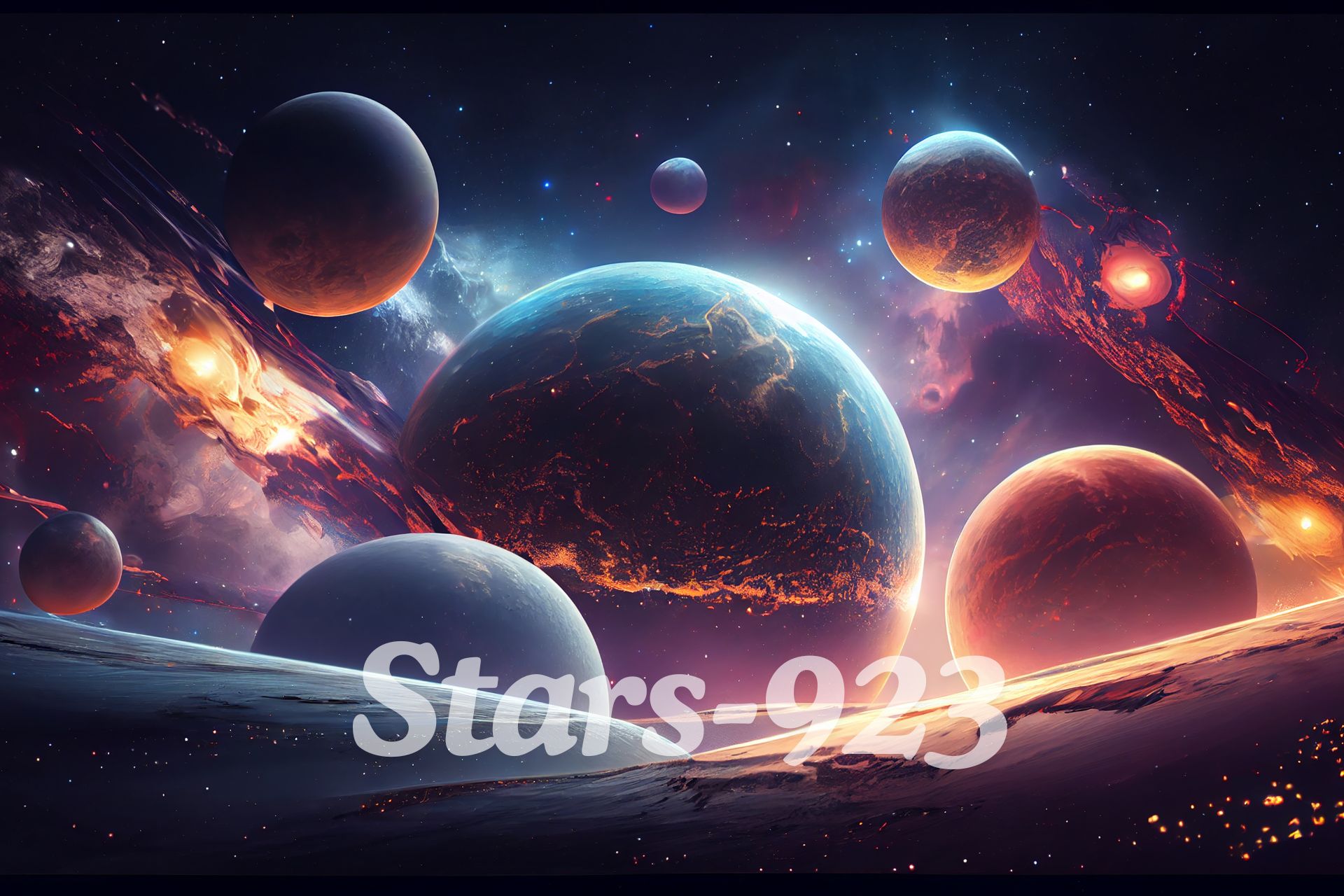When we gaze up at the night sky, a dazzling tapestry of stars stretches before us, each twinkling point holding secrets yet to be uncovered. Among these celestial wonders lies Stars-923, an enigmatic entity that has captured the imagination of astronomers and stargazers alike. What sets this star apart in the vast cosmos? As we embark on a journey through its mysteries, prepare to dive deep into its unique characteristics and explore the intriguing history behind its discovery. Join us as we unveil what makes Stars-923 a captivating subject of study for scientists and enthusiasts around the globe.
What Makes Stars-923 Unique?
Stars-923 captivates astronomers with its unusual characteristics. Unlike typical stars, it exhibits a vibrant spectrum of colors that change over time. This dynamic behavior hints at complex processes within.
Another intriguing aspect is its irregular pulse rate. While most stars have stable rhythms, Stars-923 fluctuates unpredictably. Such variations challenge existing models of stellar evolution and provoke deeper inquiry.
Additionally, the star’s location in an uncharted region draws attention. Nestled between two galaxies, it influences surrounding cosmic matter in unexpected ways. This gravitational dance adds layers to our understanding of interstellar interactions.
The presence of unique elements further sets Stars-923 apart from ordinary celestial bodies. Scientists speculate on how these rare components affect its lifecycle and potential for hosting planets.
These distinctive features not only ignite curiosity but also present opportunities for groundbreaking research into the universe’s enigmatic nature.
The History and Discovery of Stars-923
Stars-923 was first identified in the late 20th century, a time marked by rapid advancements in astronomy. Researchers were scanning vast regions of the night sky when they stumbled upon an anomaly that caught their attention.
Initially, it was cataloged as just another distant star. However, further observations revealed distinct properties that set it apart from its counterparts. Scientists quickly realized they had uncovered something special.
The discovery sparked international interest among astronomers and astrophysicists alike. Teams raced to gather data using powerful telescopes and advanced imaging techniques. Each new finding added layers to our understanding of this celestial body.
As research progressed, theories began to emerge about its origin and evolution. The potential implications for galactic studies became evident, igniting discussions within scientific communities worldwide. Stars-923 had transitioned from a mere speck in the universe into a focal point for inquiry and exploration.
Characteristics and Composition of Stars-923
Stars-923 boasts a striking composition that sets it apart from many celestial bodies. Primarily, it is composed of hydrogen and helium, similar to other stars. However, its unique mix of heavier elements gives it an intriguing character.
The temperature at its core reaches astonishing levels. These extreme conditions facilitate nuclear fusion, producing immense energy that radiates outward. This stellar activity creates the vibrant light we observe from Earth.
Another fascinating aspect is its size. Stars-923 has been classified as a supergiant star. Its enormous mass influences surrounding space phenomena such as gravitational pull and the formation of nearby planetary systems.
Spectroscopy reveals further details about its atmosphere and surface conditions. This data indicates diverse chemical signatures that hint at past events in the star’s lifecycle. Each element contributes to the complex tapestry woven within this cosmic giant, making Stars-923 truly captivating for astronomers and enthusiasts alike.
Theories and Speculations Surrounding Stars-923
Stars-923 has sparked a wealth of theories among astronomers and astrophysicists. Some suggest it may host unique planetary systems, unlike anything we’ve seen before.
Others are fascinated by the possibility that Stars-923 could harbor life. Its peculiar characteristics lend themselves to speculation about extraterrestrial civilizations evolving under its light.
There’s also intrigue surrounding its formation and age. Could Stars-923 be an ancient remnant from the early universe? This idea invites questions about cosmic evolution and stellar lifecycles.
A popular theory posits that Stars-923 is part of a binary system, influencing nearby celestial bodies in unexpected ways. Such dynamics might lead to surprising gravitational interactions or even new forms of star behavior.
As our observational capabilities expand, we find ourselves on the brink of revealing more secrets held by this intriguing star system—perhaps leading us down paths yet unimagined in astronomy.
Observing and Studying Stars-923: Tools and Techniques
Observing Stars-923 requires a blend of innovative tools and techniques. Astronomers use powerful telescopes equipped with advanced sensors to capture its elusive light. These instruments can reveal details invisible to the naked eye.
Spectroscopy plays a crucial role in studying this star. By analyzing light spectra, scientists gather information about its composition and temperature. This method opens a window into understanding the star’s unique characteristics.
Additionally, space observatories provide an unobstructed view of Stars-923. Positioned beyond Earth’s atmosphere, they eliminate atmospheric distortion, yielding clearer images.
Data collection is complemented by computer simulations that model stellar behavior over time. These simulations help theorize the evolution of Stars-923 based on current observations.
Collaborative efforts among astronomers worldwide enhance research opportunities too. Sharing findings accelerates discoveries and fosters deeper insights into this celestial wonder. Each observation adds another piece to the intricate puzzle surrounding Stars-923.
Possible Future Discoveries and Implications of Stars-923
As astronomers continue to delve into the mysteries of Stars-, exciting possibilities arise. One potential discovery could be the identification of exoplanets within its vicinity. Such planets might harbor conditions suitable for life.
New technologies may unveil unprecedented details about this celestial body. Advanced telescopes and spectroscopic methods will allow scientists to analyze its light spectrum more effectively. This can reveal much about the composition and atmosphere surrounding Stars-.
Moreover, research on Stars-923 might reshape our understanding of stellar evolution. It could challenge existing theories or support new models regarding star formation and lifecycle stages.
The implications extend beyond academics; they stir public interest in space exploration. A deeper knowledge of Stars- may inspire future missions aimed at uncovering similar enigmatic stars across the universe, pushing humanity’s quest for cosmic knowledge further than ever before.
Conclusion
The exploration of Stars- captures the imagination and ignites curiosity. Each discovery about this celestial body reveals more about our universe’s vastness and complexity. As we continue to study its unique properties, we uncover not just facts, but also deeper questions.
What lies beyond our current understanding? What secrets do the stars hold as they shine brightly in the night sky? The journey toward uncovering these mysteries is filled with excitement and wonder. Every observation brings us closer to answering age-old questions about existence, life beyond Earth, and the intricate workings of cosmic phenomena.
As technology advances, so does our ability to observe distant stars like Stars- Future discoveries may transform our perception of space itself. The beauty lies in knowing that each new piece of information can change everything we thought we knew.
The allure of exploration is timeless. It pushes humans forward into uncharted territories—both physically and intellectually. Whether through powerful telescopes or theoretical models, studying Stars-923 exemplifies humanity’s relentless quest for knowledge among the stars.
This celestial journey reminds us that while there are still many unknowns ahead, every leap into darkness holds potential for enlightenment and awe-inspiring revelations.











